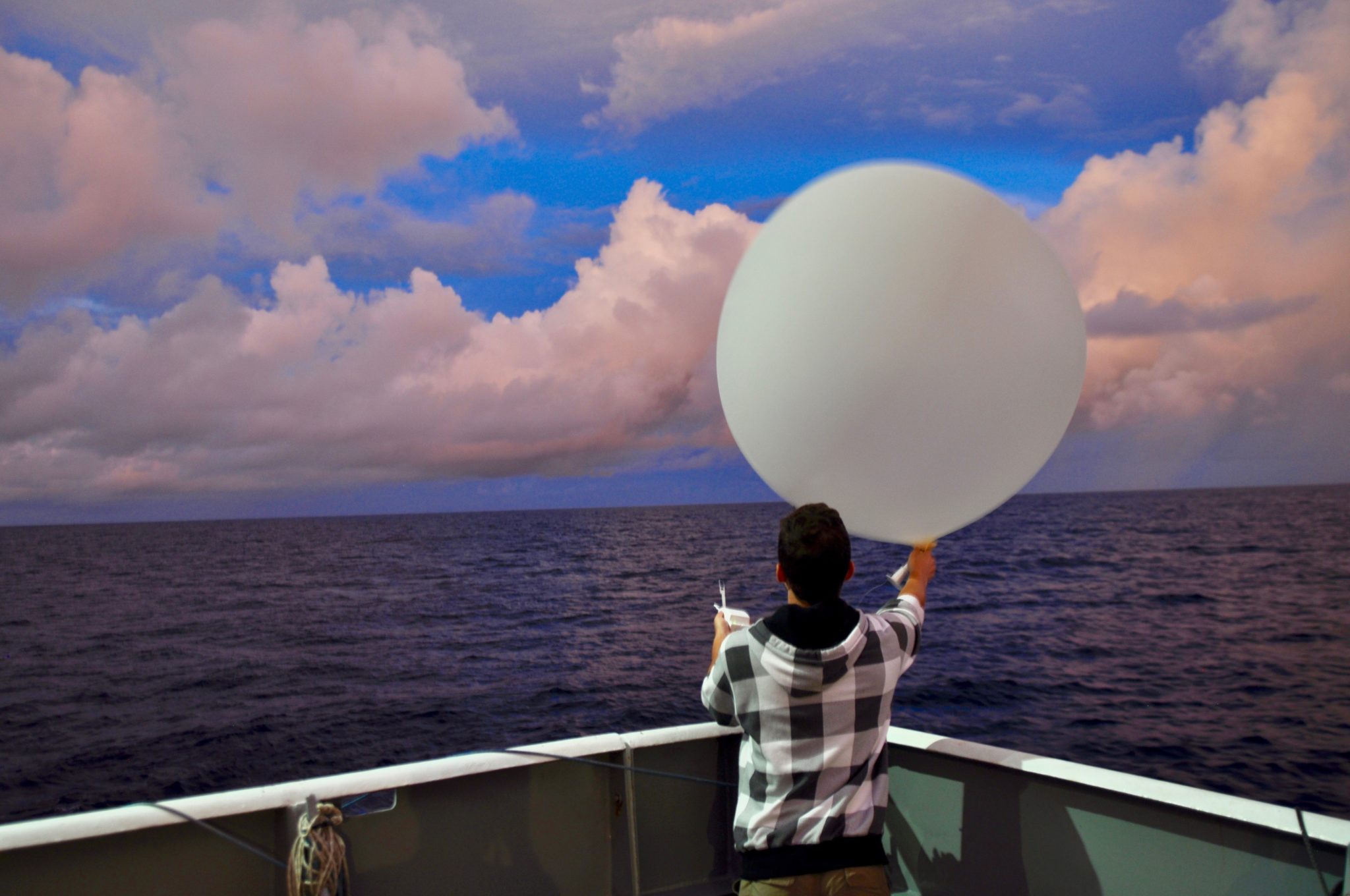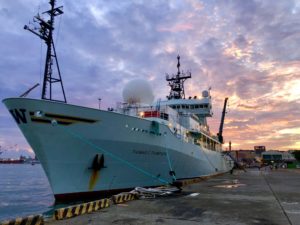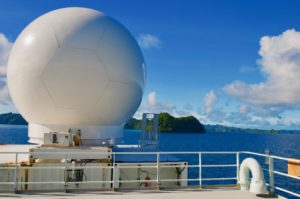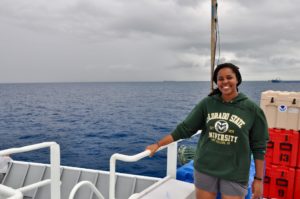
As field researchers know, sometimes the science you set out to do is not what you end up doing. But the drive for knowledge is unwavering, and scientists find a way to get the job done, even if it means changing course, maneuvering bureaucratic hurdles and waiting out setbacks. Flexibility is key to field campaigns, and sometimes the reward is in the unexpected discoveries.
One team of Colorado State University scientists can attest to this recent experience. Department of Atmospheric Science researchers set sail on U.S. research vessel the R/V Thomas G. Thompson in August and September to study precipitation in the tropical west Pacific. Their project, the Propagation of Intra-Seasonal Tropical OscillatioNs, or PISTON, seeks a better understanding of precipitation processes in this area, in order to better understand weather across the Maritime Continent, in southeastern continental Asia, and even in the U.S.

“PISTON had lots of challenges because it was a complex, international experiment. But many of the challenges we faced come with the business of doing this type of science,” said Professor Steven Rutledge, lead principal investigator for PISTON’s atmospheric component. “In the end, it all worked out.”
A complex set of factors contribute to tropical weather, requiring PISTON to be an extensive field campaign involving intensive numerical modeling and observation. Fourteen universities and several national and international organizations collaborated on the project, with funding for the U.S. portion provided by the Office of Naval Research.
Taking a detour
As with any job so large and complicated, PISTON encountered some challenges along the way. PISTON was rerouted to international waters far east of the Philippines after the Philippines denied the collaboration permission to conduct research in the South China Sea just west of the country’s largest island, Luzon.
“The change in location allowed us to do different science, to examine the atmosphere and ocean before, during and after the passage of typhoons,” Rutledge said.
Rutledge’s research group deployed PISTON’s two main instruments for measuring atmospheric properties, the new SEA-POL C-band polarimetric radar – on its second assignment since it was designed and built at CSU – and a CSU radiosonde system. The team conducted continuous radar and atmospheric sounding observations on two 30-day cruises, gathering a wealth of data that will take at least two years to analyze. Some of the typhoon observations were the first of their kind.

“Going east of Luzon into international waters allowed us to collect some unique, first-time observations where a ship-based polarimetric radar, SEA-POL, documented the precipitation patterns of spiral and outer bands associated with several typhoons.”
Experiencing technical difficulties
Before the CSU researchers were able to collect any data, however, they dealt with another setback. One of the R/V Thompson’s main engines overheated while sailing from the Bay of Bengal to pick up the PISTON crew in southern Taiwan. It took a full week to replace all the cylinder heads on the engine, while the CSU team waited out the delay in port city Kaohsiung, Taiwan.
“When technology is used in the field in stressful conditions, things occasionally break, which is hard to appreciate for a modeler like me, who mostly sits in front of his computer screen all day,” said Professor Eric Maloney, who led development of the science plan for PISTON. “It is good for deskbound people like me to go into the field and appreciate this occasionally.”
Once underway, researchers tracked large rainbands and their interactions with the daily cycle of rainfall, typhoons and atmospheric waves, using a variety of tools and sophisticated regional models, including the RAMS model developed and maintained by Professor Sue van den Heever’s research group at CSU. Maloney and scientist Emily Riley Dellaripa headed a major modeling component, and Associate Professor Michael Bell and his group led forecasting, providing daily forecast summaries to researchers on the R/V Thompson. Van den Heever and her group were involved in PISTON’s numerical modeling activities, and Electrical and Computer Engineering Professor V. Chandrasekar led the SEA-POL engineering team (Jim George, Francesc Junyent and Alex Morin) to ensure that SEA-POL was in top condition for the rigorous deployment. More than 20 other graduate students and researchers from the Maloney, Bell, Rutledge and van den Heever research groups contributed to field observations, forecasting, data processing and modeling.

Modeling and data analysis activities will continue for the next few years, including analysis and comparison of model results to observations taken in the field. And PISTON scientists might get a chance to revisit the research goals they originally proposed. There is a possibility that the Philippines will approve a voyage into the South China Sea, the project’s original destination, next summer. Regardless, the scientists are prepared to adapt and improvise as needed, because, as Rutledge points out, that’s an essential part of the job.
“Fieldwork is all about adapting on the fly.”